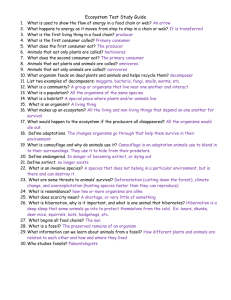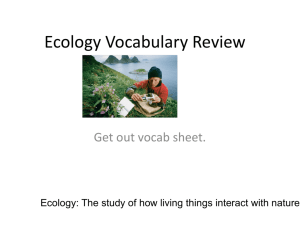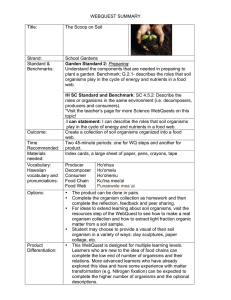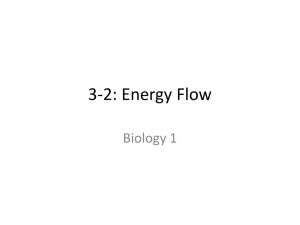Ecology Vocabulary: Chapters 4 & 5 Definitions
advertisement
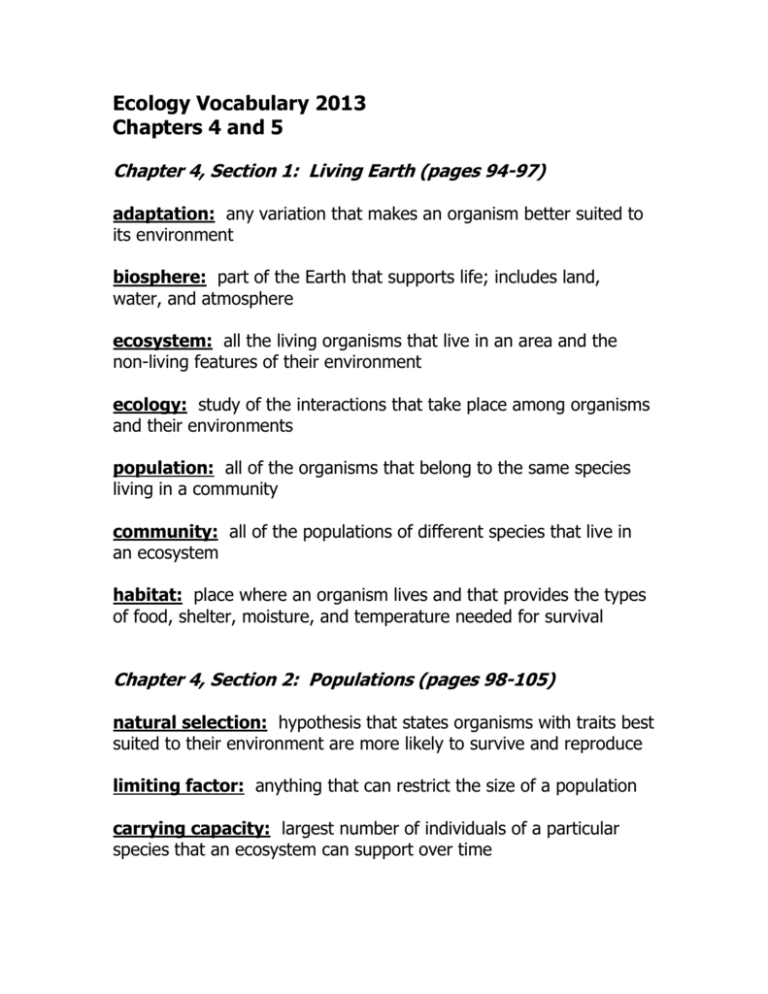
Ecology Vocabulary 2013 Chapters 4 and 5 Chapter 4, Section 1: Living Earth (pages 94-97) adaptation: any variation that makes an organism better suited to its environment biosphere: part of the Earth that supports life; includes land, water, and atmosphere ecosystem: all the living organisms that live in an area and the non-living features of their environment ecology: study of the interactions that take place among organisms and their environments population: all of the organisms that belong to the same species living in a community community: all of the populations of different species that live in an ecosystem habitat: place where an organism lives and that provides the types of food, shelter, moisture, and temperature needed for survival Chapter 4, Section 2: Populations (pages 98-105) natural selection: hypothesis that states organisms with traits best suited to their environment are more likely to survive and reproduce limiting factor: anything that can restrict the size of a population carrying capacity: largest number of individuals of a particular species that an ecosystem can support over time Chapter 4, Section 3: Interactions within Communities (pages 106-110) social behavior: interactions among members of the same species producer: organism that can makes its own food consumer: organism that obtains its food by eating other organisms symbiosis: any close relationship between species mutualism: a relationship where both species benefit commensalism: a relationship where one species benefits and the other us unharmed or unaffected… parasitism: a relationship where one species benefits and the other is harmed but not killed niche: refers to the unique ways an organism survives, obtains food and shelter, and avoids danger Chapter 5, Section 1 (pages 122-128) environment: everything, such as climate, soil, and living things that surrounds and affects an organism biotic: features of the environment that are alive or were once alive abiotic: nonliving, physical features of the environment, including air, water, sunlight, soil, temperature, and climate atmosphere: air surrounding Earth; is made up of gases, including 78% nitrogen, 21% oxygen, and .03% carbon dioxide soil: mixture of mineral and rock particles, the remains of dead organisms, air, and water that forms the top-most layer of Earth’s crust and supports plant growth climate: average weather conditions of an area over time, including wind, temperature, and rainfall or other types of precipitation such as snow or sleet Chapter 5, Section 3 (pages 136 – 139) energy: the capacity for doing work chemosynthesis: process in which producers make energy-rich nutrient molecules from chemicals food web: model that shows the complex feeding relationships among organisms in a community energy pyramid: model that shows the amount of energy available at each feeding level in an ecosystem



